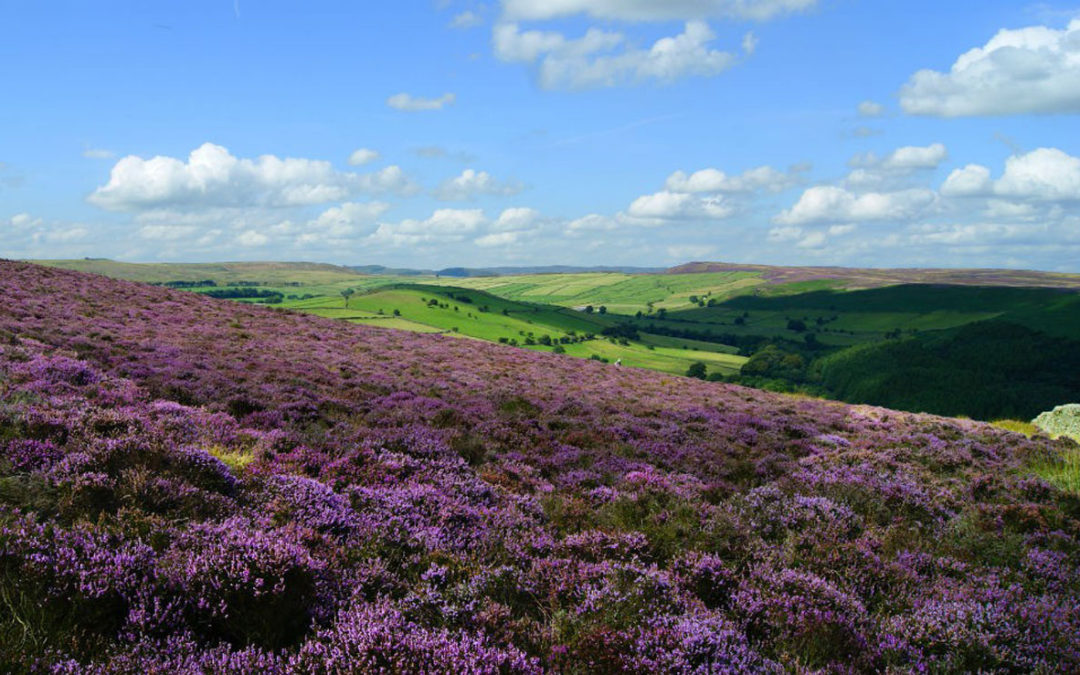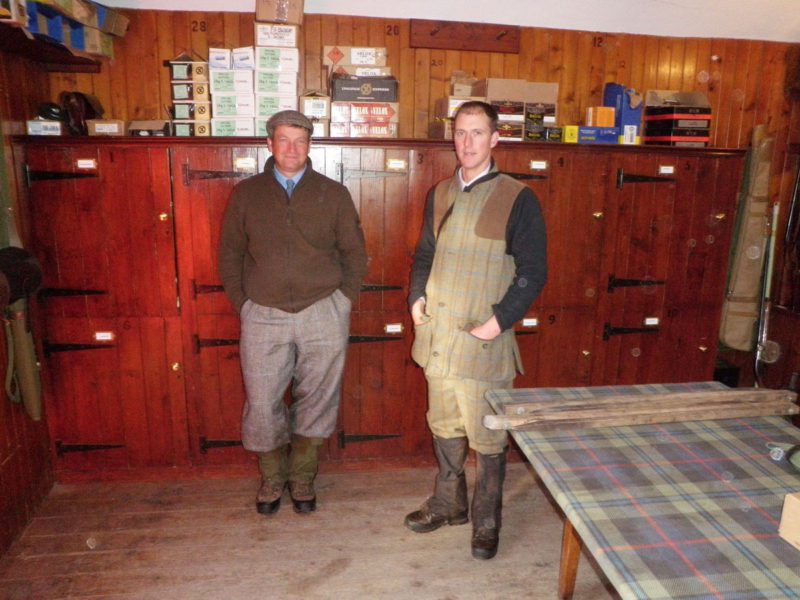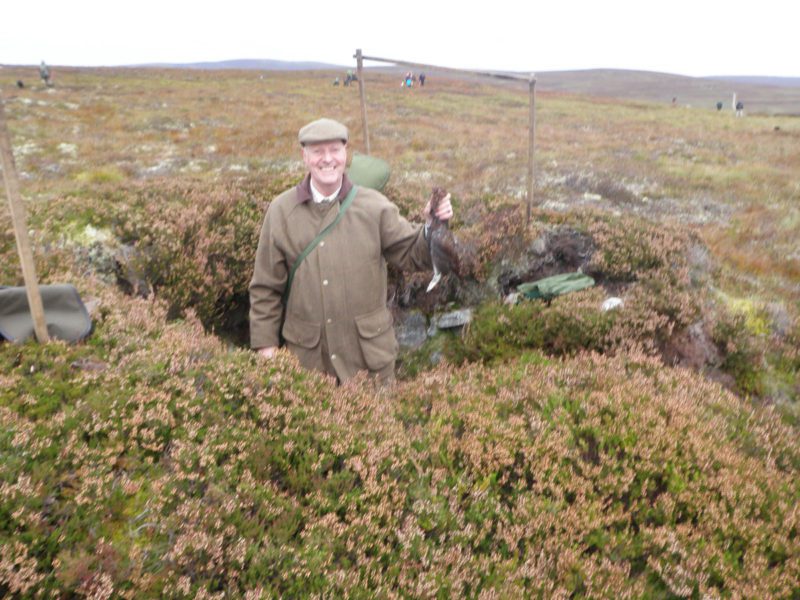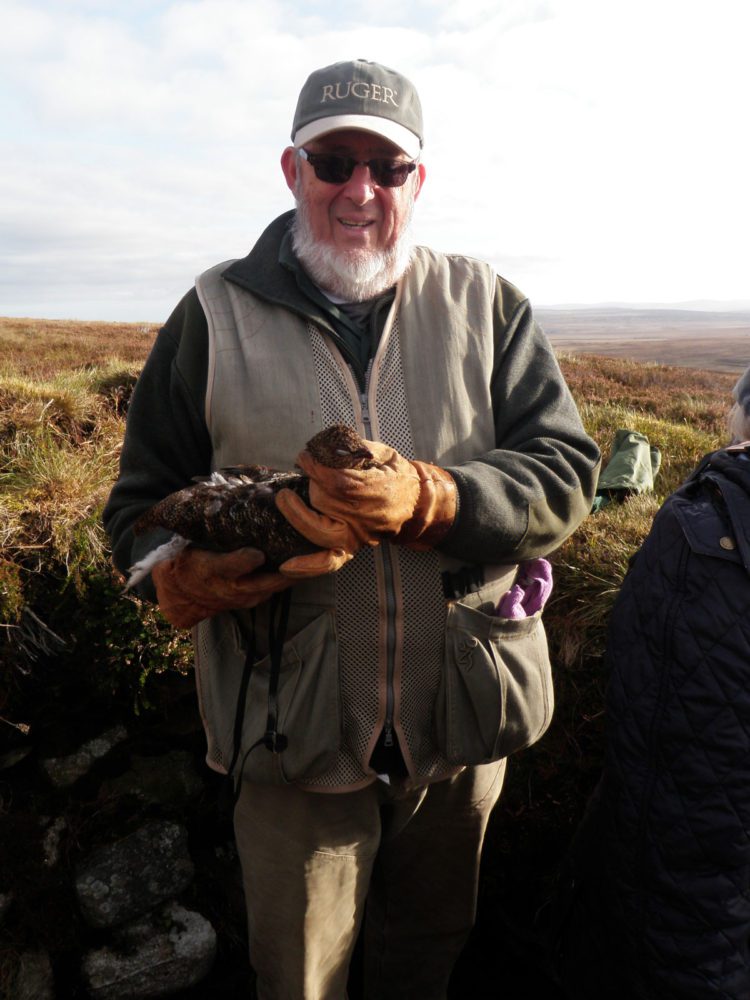Wingshooting Scotland
November 13, 2020



 Hunting,SCA Articles
Hunting,SCA Articles

For two days I hunted red grouse in the moors near Inverness, Scotland — one day of driven birds and one day of walk-up. It was the trip of a lifetime with friends and family.
Excitement rode beside us as we traveled from Boston to Inverness. All of us were experienced upland bird hunters – ruffed grouse, woodcock, pheasant, quail. But none of us had shot wild driven birds. We talked, we speculated, we guessed; we hoped, we waited. Finally, we arrived.
Vernon Waters, our outfitter, a short, bustling, burly man, met us with a warm smile and firm handshake, “Welcome to Scotland,” he said. “The cars are over here. We’ll take care of the luggage and gun cases. It’s a forty-minute drive to Drynachan, Lord Cawdor’s hunting lodge. You’ll be staying there. We have dinner waiting.”
We traveled on narrow roads and dirt tracks in the dark. The moors were beside us on much of the journey, but remained a dark, mysterious landscape. Finally, we pulled up to a well-lit courtyard, unloaded our gear and walked inside the spacious lodge to dinner. We ate, we unpacked, we slept, and we waited for morning, eager for our shotguns and the birds.
The next morning, I got up at 6:30 and followed the smell of coffee to Vernon’s office. He laughed, poured me a cup, and said, “You are the fourth. Jim, Amos, and Bill arrived before you and went straightaway to the gunroom.” I drank my coffee quickly and departed for my guns.

Gameskeepers relaxing in the gun room.
The gunroom was a stone building with a bolted steel door. It was a hundred yards away from the hunting lodge and dated back to black powder days. In those old days, it was the place where powder and lead were stored, well away from the main building in case of fire or explosion. Now the estate keeps more modern guns and ammunition there.
Jim had his matched pair of Churchills assembled and was working on his Boss. Amos was rubbing one of his Brownings with an oily cloth. Bill was seated at the table assembling his Scots-made Daniel Fraser 16 gauge. I walked to the table, unlocked my gun case and put together my 16 gauge William Ford boxlock and my Browning 325 12 gauge.
We smiled at each other, but no one spoke. We’d speak later at breakfast. Now we looked at each other, at the room and the guns, and absorbed the atmosphere. Lord Cawdor’s matched pair of London Best Sidelocks in the far-right gunrack set the tone – serious and respectful but also celebratory and joyful.
We ate breakfast. A good but hurried one. Vernon tried to slow us down, but we gulped coffee, shoveled eggs and left for the outdoors. Eventually, we were all in the courtyard outside the gunroom along with dogs, loaders, beaters, gamekeepers, lorries, land rovers and great anticipation. A cheerful buzz of conversation filled the air.
Seven Yankee shooters and three non-shooting onlookers made up our party. The shooters met their loaders, checked guns and ammunition, drew shooting butts, and joined the mill of excitement building in front of the gunroom. Our outfitter, Vernon Waters, and the estate’s head gamekeeper, Roddy Forbes, organized two parties: the bird beaters got into lorries and left for the moors; the shooters and loaders left in land rovers for the butts.
The hunting lodge lay next to the River Findhorn. We drove up and up out of the valley on a paved road, then continued on a dirt road and finally a tractor trail. On the side of the trail we saw red grouse flushing away from our cars into the moor. We smiled. Some of the birds ran beside us and darted into the moor, others flew and glided hundreds of yards over the next ridge. But they were there.
We walked through the shin-high muted purple of the heather to our shooting positions. I had drawn butt number one so Gordon, my loader, and I were the first to leave the group. My butt was a shoulder high hole in the moor lined with stone and timber. A layer of mud lay underfoot. This line of shooting butts had been in use for more than a century. As Gordon set up wooden safety barriers on the left and right of our position, I uncased my 16-gauge side-by-side, broke it and put it down on the grassy edge of the butt.

My loader Gordon with one of my birds.
Gordon joined me and said, “The wooden barrier is to keep you from shooting toward other gunners in the line. You may shoot at any bird in front until your gun reaches the barrier. You may turn and shoot going away. You are not shooting two guns, so today I am a stuffer. Shoot, eject, and I will stuff fresh shells into the chamber. Close the gun and you are ready for the next bird.
“I’ll spot, and say: in front, left, right, high, or low. The birds will be there. These are adult birds and fast flyers. A few will be twenty yards high, but most will be lower. If you miss, double the lead and shoot again. The drive has started and the grouse will be here …”
A shot from out of sight ended Gordon’s remarks. I heard a quick pair of shots, then a series of overlapping shots coming from my hidden friends. I looked right, caught a flash of feathers flying low, and watched my neighbor, Jim, empty both barrels. When Gordon said ‘low and fast’ he was not joking.
“In front, sir. Low.”
In front. Where? I didn’t — a blasted grouse went whistling past my head about four feet off the ground. It blended right into the heather on the slight rise in front of me. Not much warning and no chance for me. With the wind behind it and going downhill, that bird was faster than any clay target I’ve seen. Look farther out, pick them up as they crest the hill and are skylined, I thought. Listen to Gordon spot, and lead, lead, lead. Get ahead of those birds. Let the shot-stream of English fives do its job.

A driver hands a just downed grouse to my loader.
Shots came from the far right, where Amos and Bill were heavily engaged, dealing with a flock of twenty moor-hugging grouse. Their stuffers were getting a workout. More shots from the right as another fifteen driven birds flashed through that part of the line.
The sounds on the right flank distracted me, but Gordon brought me back: “Three birds on the left, sir.”
I looked and turned left, lifting my gun as I saw – actually saw — the birds 35 yards out front and closing. I focused on one bird, got ahead of it and fired. I kept swinging on the same bird and was brought up short by the wooden barrier. A feather drifted in the wind. I ejected the shell. Gordon reloaded.
“You hit him in the tail, sir. A bit more lead.”
I smiled and nodded and focused on the rise in front. “Shoot ahead,” I told myself. “Double the lead. One bird, just pick one bird. Follow through. Use the second barrel.”
Good advice. I missed three more birds before I took it.

Author with his first red grouse.
“Good shot, sir. That’s your first red grouse. A nice crosser. Congratulations.”
I then missed the next two. Now the birds were coming nonstop. No time to think, just shoot, eject, close the gun, and shoot again. Gordon’s fingers were very busy, and I was the one with the gun. Fire, eject, get ready, lead that bird, fire and fire again. I saw feathers in the air, a pin-wheeling bird.
“On the left, sir.” Bang, bang.
“Two on the right, sir.” Bang. Feathers. Stopped by the wood.
“Five in front, sir.” Bang, bang. “Very good second barrel, sir. That got him.” I watched a bird land in a heap five yards in front of me.
More birds came, but they flew between David and Jim. I watched them shoot. Jim made a fine double. David feathered a bird and I saw it drop seventy yards behind him. A horn blew. We turned and faced the rear.
“Now, only going away birds, sir. The beaters are too close to shoot incomers.” I waited. “Two birds on the left, sir. Get ready. Now!”
I picked up the birds and got on the left one. A trap shot, something I have practiced and understand. Bam! Feathers in the air and a crushed bird. I got on the second. Quick. Those birds were fast. Slightly ahead and bam. Another trap shot. I saw a leg drop and the grouse started to glide.

Author with some of his bag 49.
“Nice shooting, sir. Dogs will pick up that second one.”
A shot on my left and I saw a bird whirling to the ground. I yelled, “The Boss!” to Jim just as the horn sounded that ended the drive. I broke my shotgun and handed the two live shells to Gordon.
I took several very deep breaths. Intense was too soft a word to describe the experience. Gordon and I picked up my empty shells from around the butt. I smiled – a lot. I cased my Ford and handed it to Gordon.
We watched the busy little Cockers and larger Labs work the moor in front and behind us. They found birds. A beater handed me one. I turned the bird in my hands. A male. Simply beautiful. I started to breathe. My hands shook. One leg trembled. I remembered. My God, did I remember!
“Four more drives today, sir. Are you ready?”
—
For this and other Scottish destinations, contact outfitter Vernon Waters. His firm is Hendry Ramsay &Waters (Worldwide) Ltd. www.scothunt.co.uk +44(0)1337840600 info@scothunt.co.uk
Author’s note: There is lots of info on the website. We made our arrangements through Vernon and he was very helpful. He has access to many more venues as well. Check it out. Lodge and guides vary depending on the location and game. Vernon is the mastermind and the one to contact.
